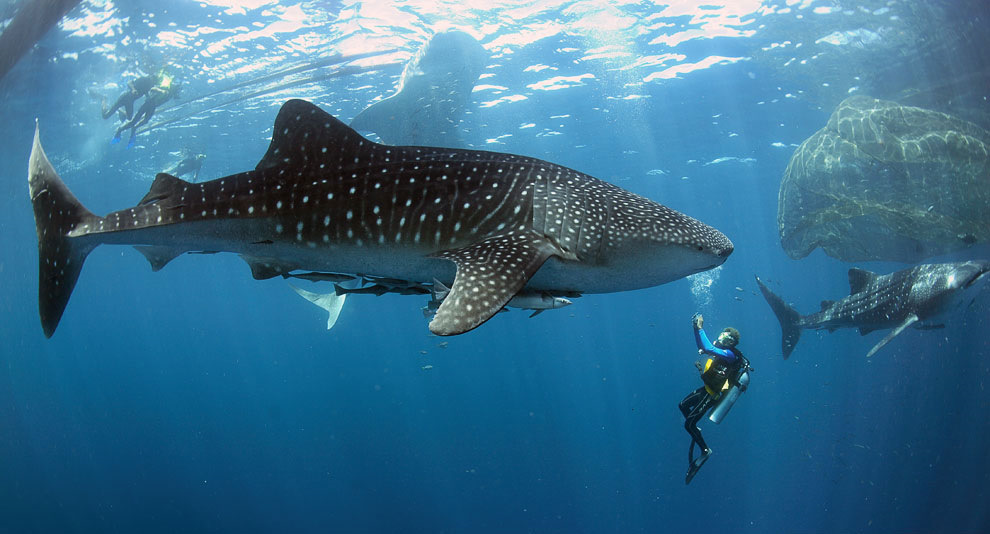Whale sharks are an unforgettable experience that puts you in close contact with these gentle giants that inhabit the ocean. These amazing creatures, renowned for their distinctive spotted patterns and huge size, are able to capture the hearts of adventurers as well as naturalists alike. If you’ve ever imagined being able to swim alongside the biggest shark in the ocean A whale shark-watching tour is the ideal opportunity to bring that dream to life.
This guide will go over all you must learn about whale shark viewing trips, from understanding the species and the habitats they inhabit, to helpful tips for planning an unforgettable and eco-friendly trip.
What Are Whale Sharks and Why Are They Special?
Whale sharks (scientific name: Rhincodon typus) are the largest species of fish in the world, reaching as high as 40-foot or greater. Despite their size, these sharks that feed on filter are docile and pose no danger to humans. Their diet primarily consists of small fish and plankton which makes them an essential component in marine ecosystems.
The thing that makes whale sharks captivating is their distinctive appearance, which is characterized by beautiful patterns of white stripes and spots that are as unique as fingerprints of humans. They are peaceful creatures that often move into specific areas, giving visitors with opportunities to observe them in their natural surroundings.
The whale sharks also are believed to be vulnerable to threats like overfishing, habitat destruction, and boat accidents. Responsible tourism could be a major factor in protecting these amazing creatures, while providing memorable experiences for those who love adventure.
Best Destinations for Whale Shark Watching
If you are planning a whale shark-watching tour it is important to choose the right location. Some of the most well-known spots include:
- Mexico (Isla Holbox as well as Isla Mujeres): These locations are renowned for hosting huge quantities of whale sharks during the months of May and September.
- The Philippines (Donsol and Oslob): Donsol offers eco-friendly tours. Oslob can be controversial because of the way they feed their guests. Select wisely.
- Australia (Ningaloo Reef) from March to July the World Heritage-listed reef is the ideal spot for close encounters with whale sharks.
- Maldives All year round sights make the Maldives an ideal destination for those who want both adventure and luxury.
- Mozambique (Tofo Beach) is a less crowded location, Mozambique offers incredible biodiversity along with glimpses of whale sharks.
Every location has its own peak in the season So plan your trip according to your best chance of a positive experience.
What to Expect on a Whale Shark Watching Tour
Whale shark watching tours typically begin with a safety overview and guidelines on how to interact with the sharks respectfully. Tour operators offer snorkeling gear and usually will take you to specific areas that are known for their sightings.
On this tour
- Enjoy a swim or a snorkeling trip with Whale sharks as they roam in the wild.
- See other marine creatures like manta rays and turtles and vibrant coral reefs.
- Get the help of knowledgeable eco-guides and marine biologists who provide information on whale sharks and conservation of the ocean.
Tours usually last for a few hours, and include chances to take photos as well as moments of admiration as you gaze at the immenseness of the sea.
How to Choose a Responsible Tour Operator
Selecting an environmentally friendly operator is vital to ensure your experience is environmentally sustainable and ethical. Find companies that
- Be sure to follow the guidelines for limiting the number of whale sharks that swim per swimmer.
- Do not engage in practices such as feeding or chasing animals.
- Hire guides with a background in conservation and education.
- Make sure you use eco-friendly boats in order to minimize the environmental impact.
If you select responsible operators you are helping to protect whale sharks and help in conserving the marine ecosystem.
Tips for a Safe and Memorable Experience
- Keep the Distance Maintain a distance of at least 3 metres from whale sharks in order to keep them from being disturbed.
- Beware of Touching touching or riding whale sharks may be stressful and cause damage to their skin, which is protective.
- Wear Sunscreen that is Reef-Safe Make sure to protect marine life by using sunscreens without harmful chemicals.
- Keep calm in the water Move slowly and be careful not to make sudden movements, as this could result in animal fear.
- Follow the instructions of your guide Follow the instructions in the instruction and follow the rules to ensure a secure and respectful interaction.
These steps are easy to follow and will provide you with satisfaction while minimizing the impact you have on the environment.
The Importance of Whale Shark Watching for Conservation
Whale shark tours, if conducted in a responsible manner can significantly contribute to conservation efforts. They increase awareness of the dangers these animals face and also provide local communities with an income that is sustainable, while reducing dependence on destructive practices such as fishing.
Tourists are a key part of the equation by helping operators to prioritize conservation, and also by educating themselves on marine ecosystems. Collectively, all of this will aid in ensuring a brighter outlook for the whale sharks as well as the oceans they live in.
Conclusion
Whale sharks are an unforgettable experience which connects you to the amazing ocean. By selecting the best location by collaborating with tour operators that are responsible and adhering to the ethical standards You can have an unforgettable experience while contributing to the conservation of these amazing creatures.
If you’re looking to embark on this thrilling trip, plan your whale shark-watching tour now. Check out Friend of the Sea to find out how to conserve marine habitats and ways you can contribute to sustainable tourism.



